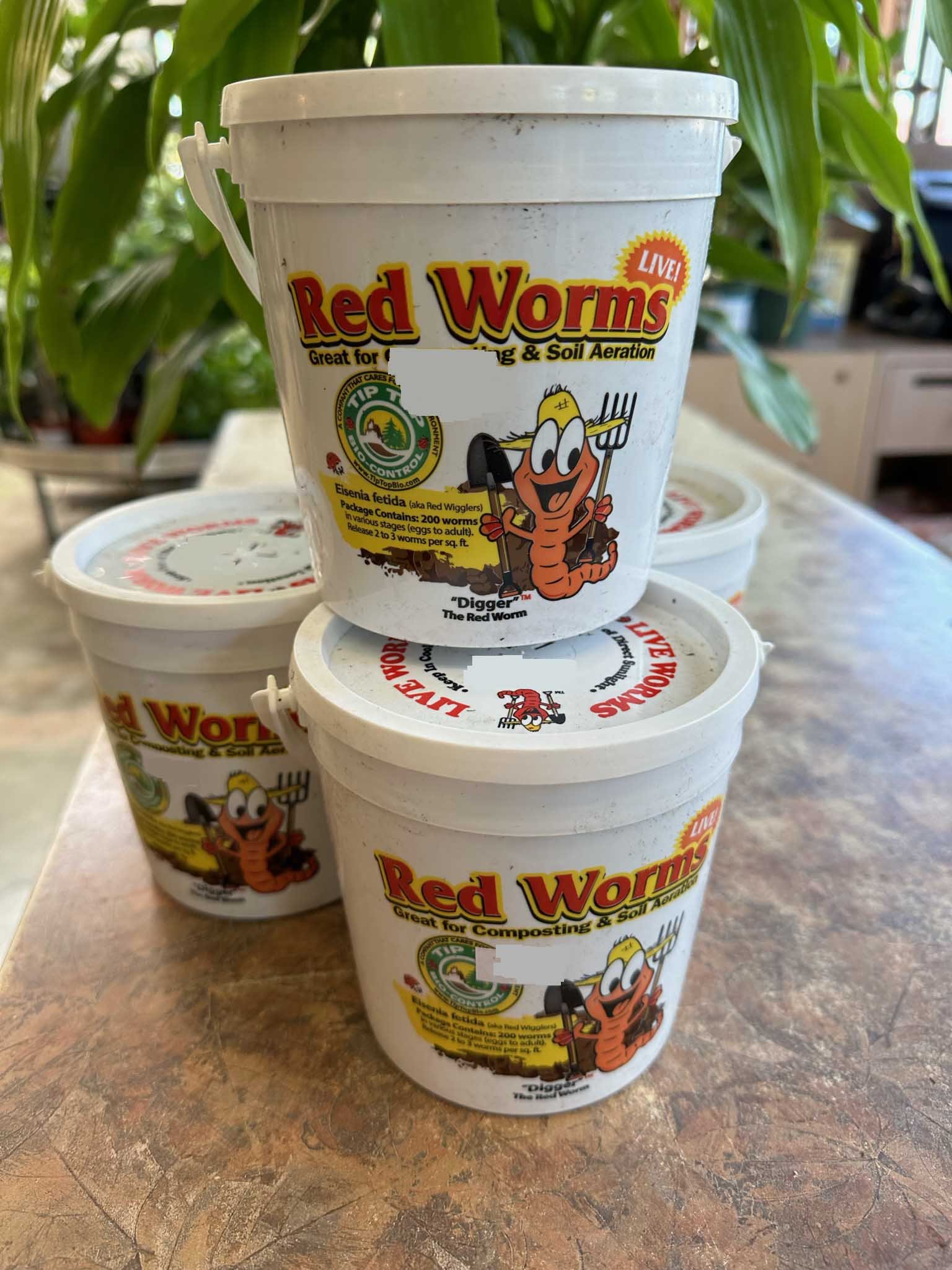Red Worms - Worm Composting
Red Worms – Worm Composting, worm Farming
Red Worms (Eisenia Fetida) convert undigested organic matter, soil, and bacteria into vermicompost, decomposed bedding and worm castings. Also known as red wigglers, they live in colonies, are prolific breeders and can consume nearly 1/3 to ½ their weight every day. They thrive in the first several inches of topsoil directly beneath decomposing organic matter. Worms can reproduce every three months and live for years.
Red worms are an excellent way to compost food scraps, kitchen waste, garden waste and leaves. Their worm castings contain significantly more beneficial micro-organisms, enzymes, humus, and plant stimulants than regular compost. Worm compost is also considered to contain up to ten times the amount of nitrogen and other nutrients of many fertilizers. These nutrients are released slowly into your garden or containerized plants without burning or runoff.
Worm compost can transform soil structure by improving aeration, water retention and porosity. Though not fully understood how yet, worm compost has been shown to improve pest and disease resistance. Additional benefits of worm composting include the reduction in your contribution to the waste stream and savings in the reduced need to purchase fertilizers, fungicides and insecticides.
Worm composting is most successfully handled with a commercially designed home use worm bin. This is typically a covered multi-layer device with trays that allow worms to reside in one of the lower levels yet move up to feed in the top level. These units typically include a base that will collect the liquids created in the process that can then be diluted and used as tea or liquid fertilizer. You can choose to build your own, follow the principles employed by the commercially available units for the best success.
Pros:
Efficient when it comes to retaining the output.
Easy to harvest the castings without losing your worms.
Easy to collect the liquid tea created.
Rodent resistant.
Portable.
Cons:
Higher initial startup cost if purchasing a kit (under $200).
Although we do not carry them at this time, we have heard great reviews from our customers on worm farming products by Tumbleweed. tumbleweedgardening.com
Worm composting can also easily be done by simply adding worms to a smaller sized compost bin that does not generate the heat created in traditional composting. Larger compost bins 4x4x4 or larger can generate enough heat to kill or drive off the worms.
Pros:
Simple
Easy
Low maintenance
Cons:
Hard to harvest the castings.
Loss of liquid tea preserved in worm bins.
May attract rodents.
Be sure to use “Red Wigglers” when starting your worm bin. Call to be sure we have them in stock before making a trip in.
Conditions for your worms to thrive
Provide shelter. This can range from sophisticated commercial housing to a simple plastic bin.
Set the home up 1-2 weeks before bringing the worms home.
Manage the temperature. They typically thrive in temperatures between 65F-80F. Below 65° the worms become less active reducing the quantity of food scrapes they will process.
Provide a consistent supply of food including food scraps, coffee grounds, egg shells, green garden waste and leaves. Avoid citrus fruit, meat or dairy products, cooking oil or animal waste. Be careful to not overfeed, limiting the food supply to what can be consumed in a few days.
Cover new food additions with moist, well aerated bedding material. Use a variety of materials which could include shredded paper, newspaper (avoid colored pages), coco coir, cardboard or dried yard waste,
Replace the bedding material periodically as it is consumed.
Monitor the moisture level, maintaining a damp but not wet environment. Worms need moisture to live – they breathe through their skin. Spritzing with a spray bottle is effective.
Quantity: One pound of worms per square foot of surface area in a compost or worm bin.



